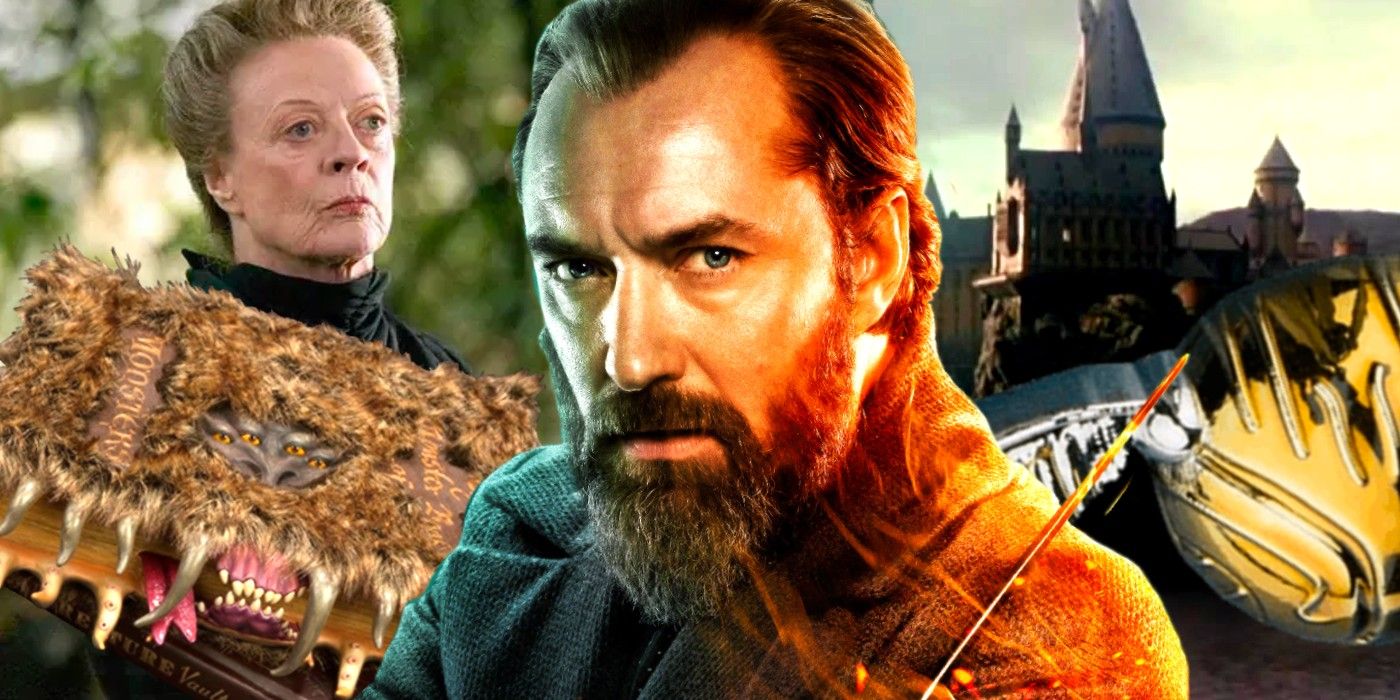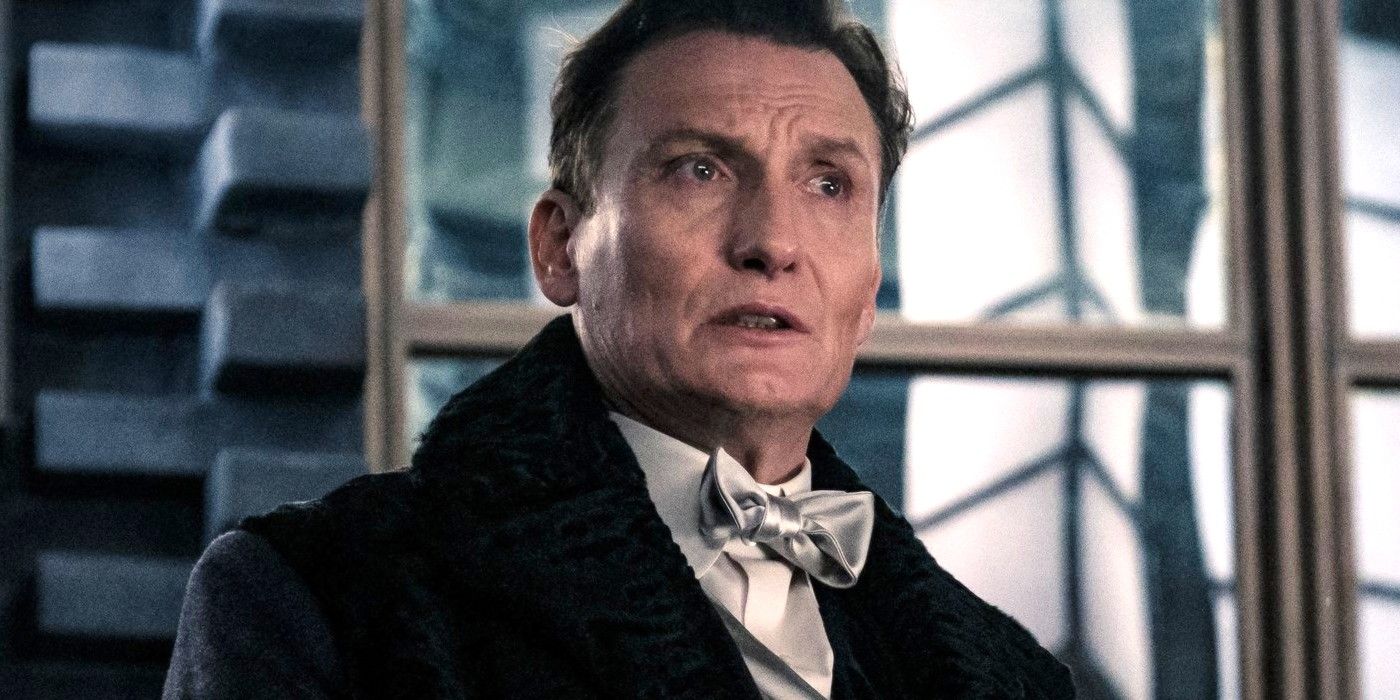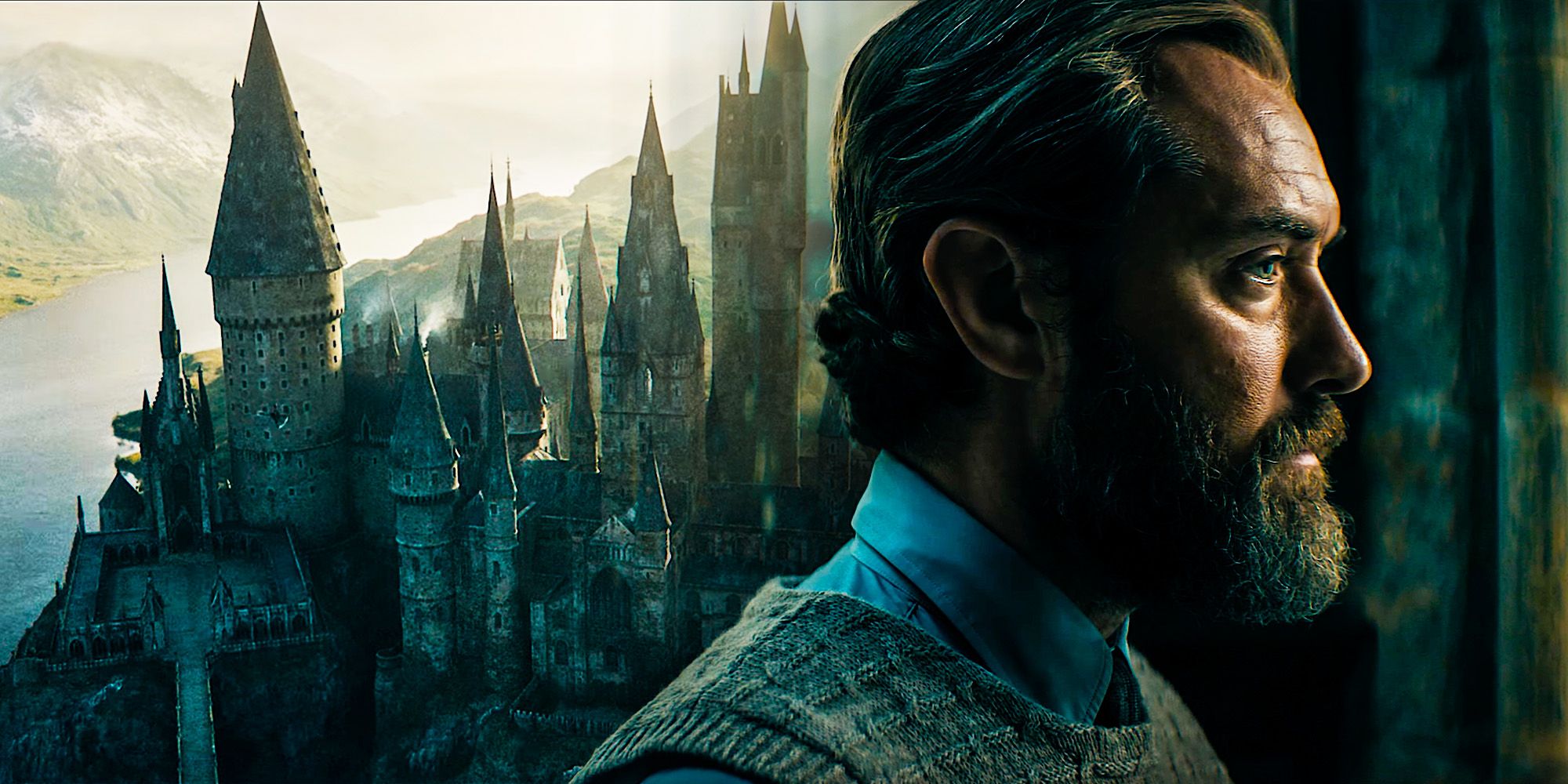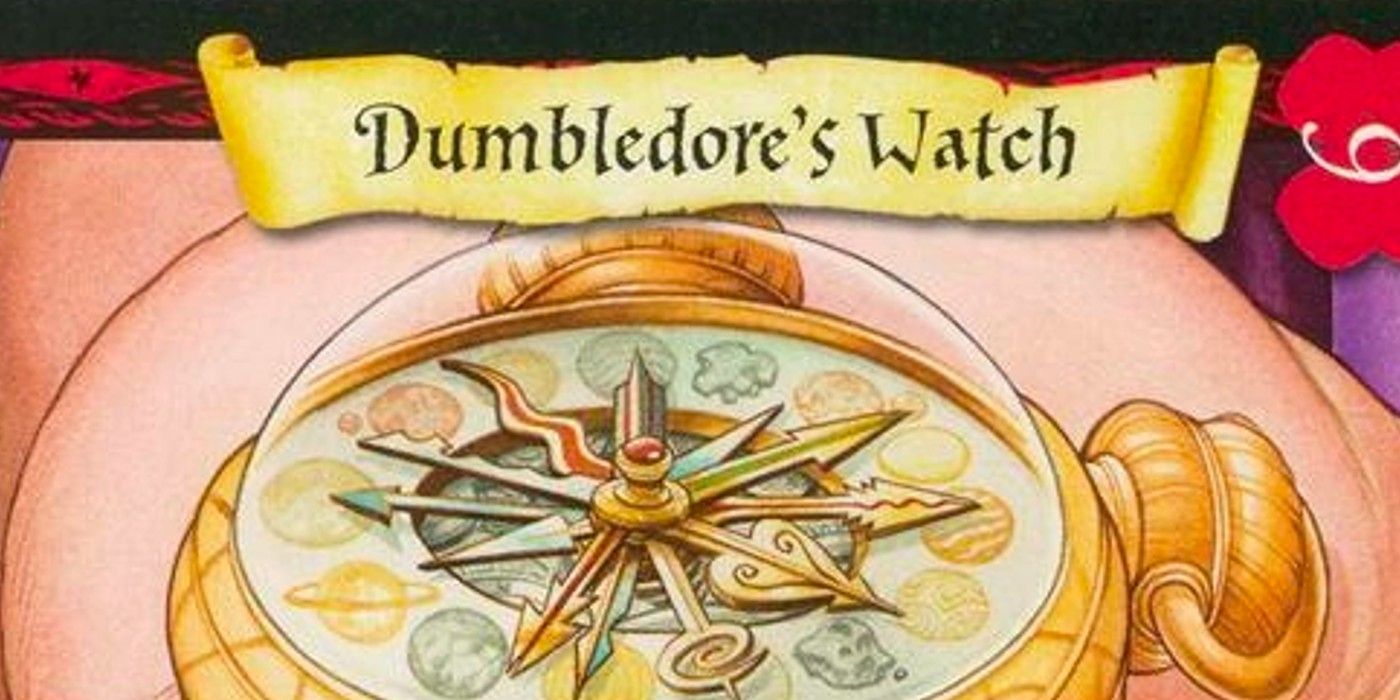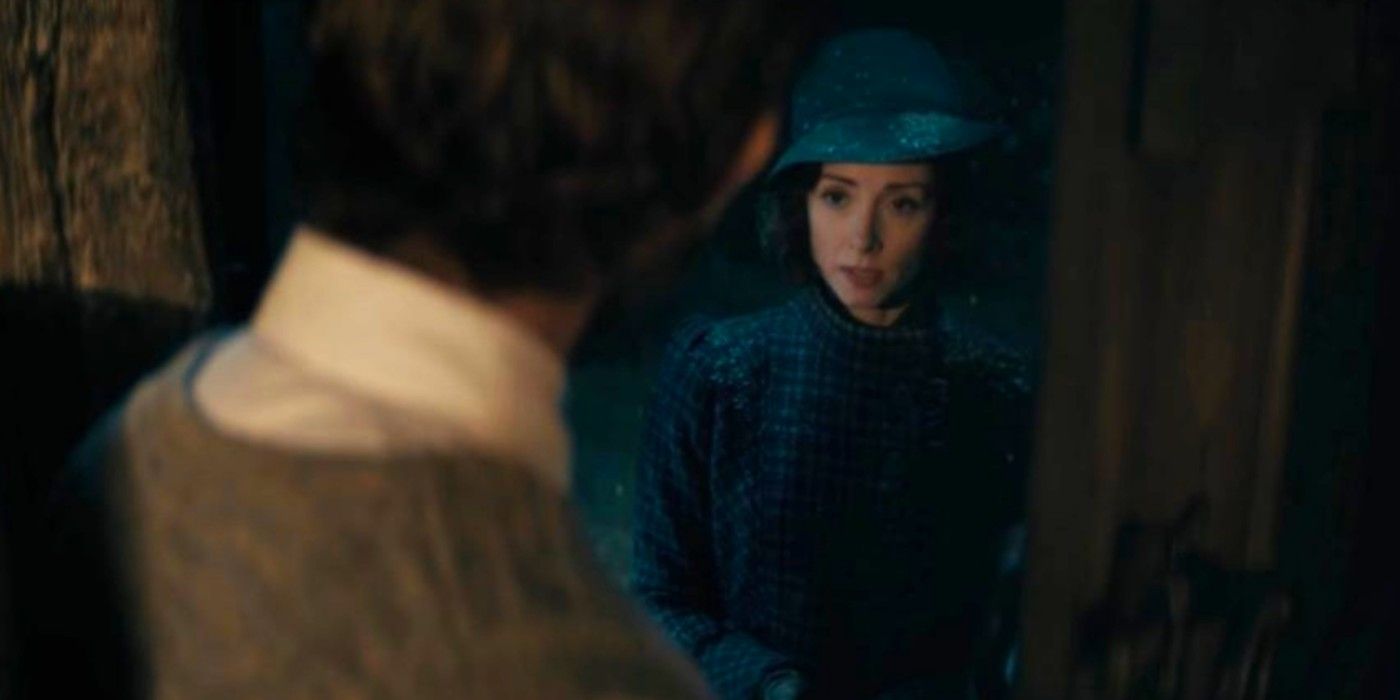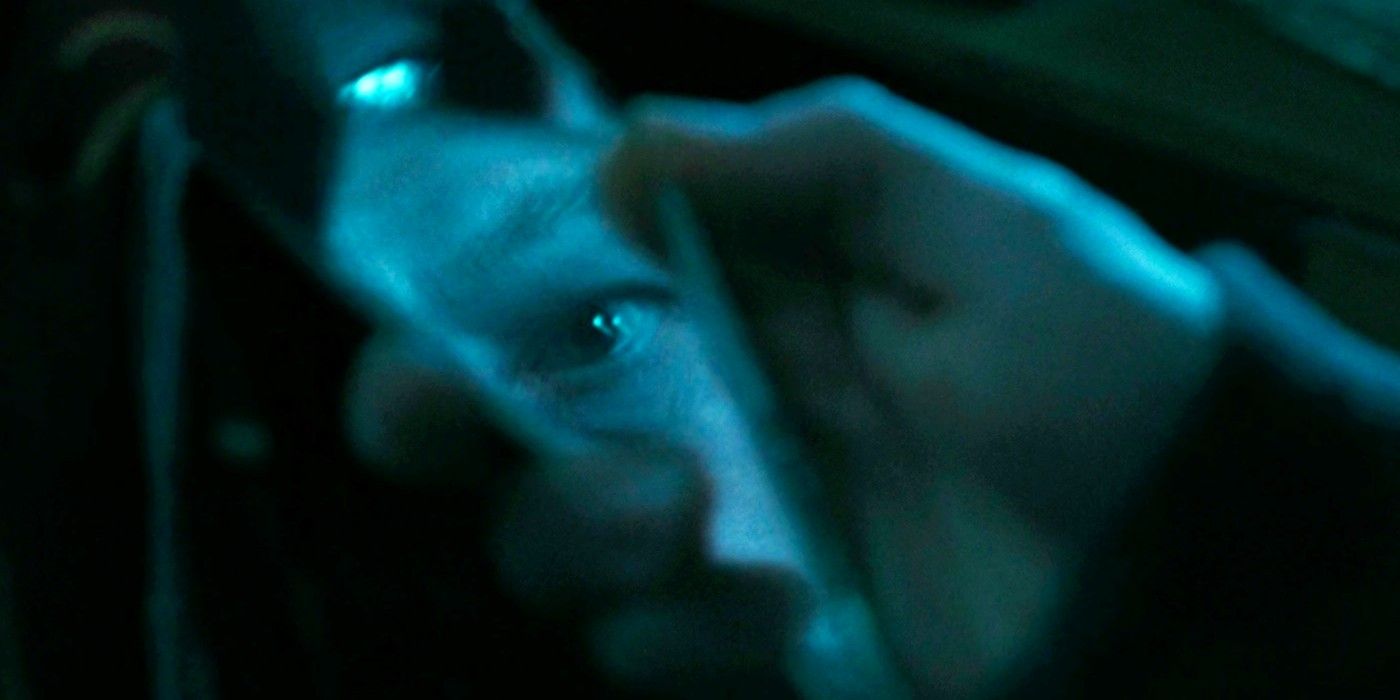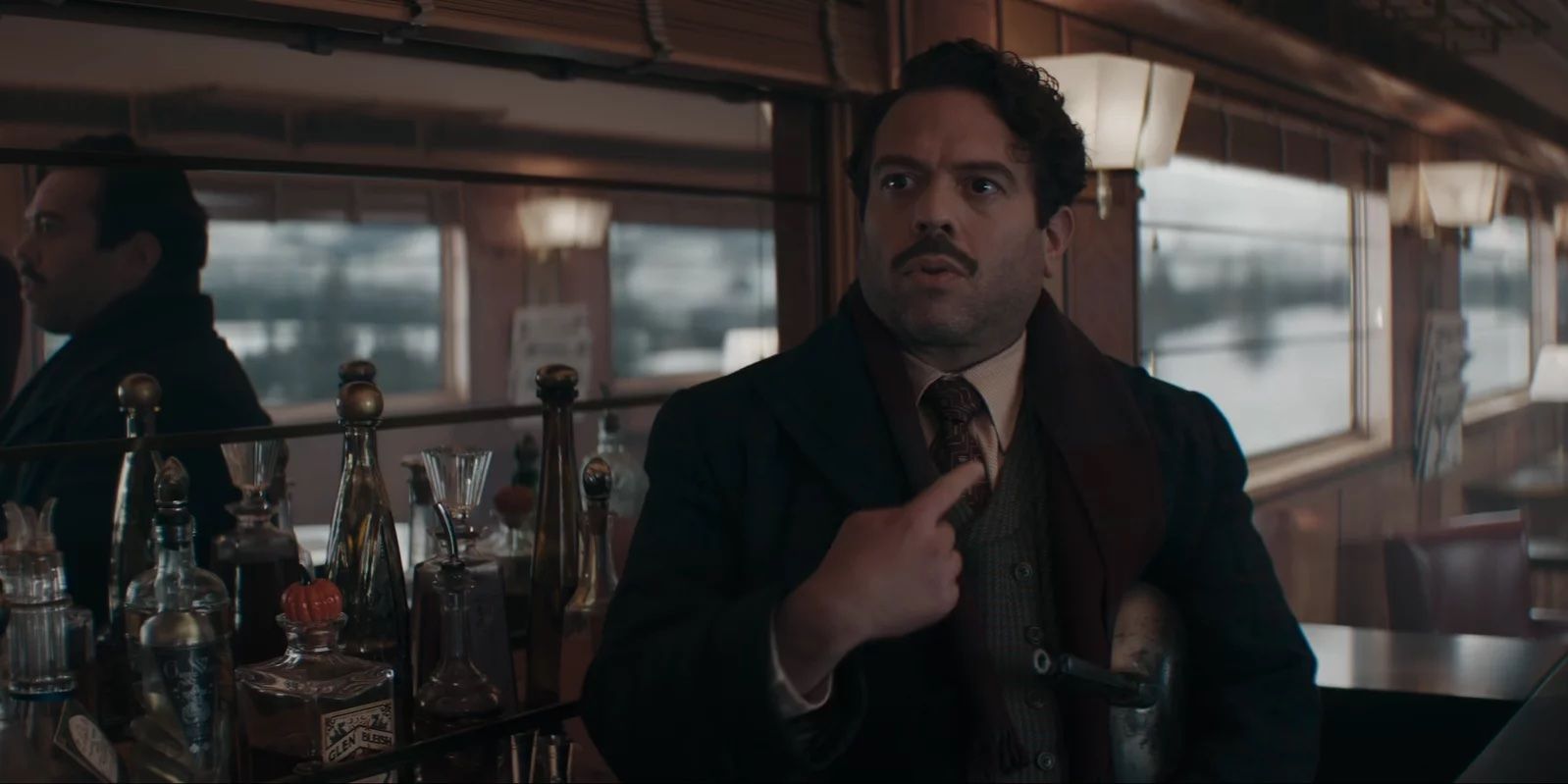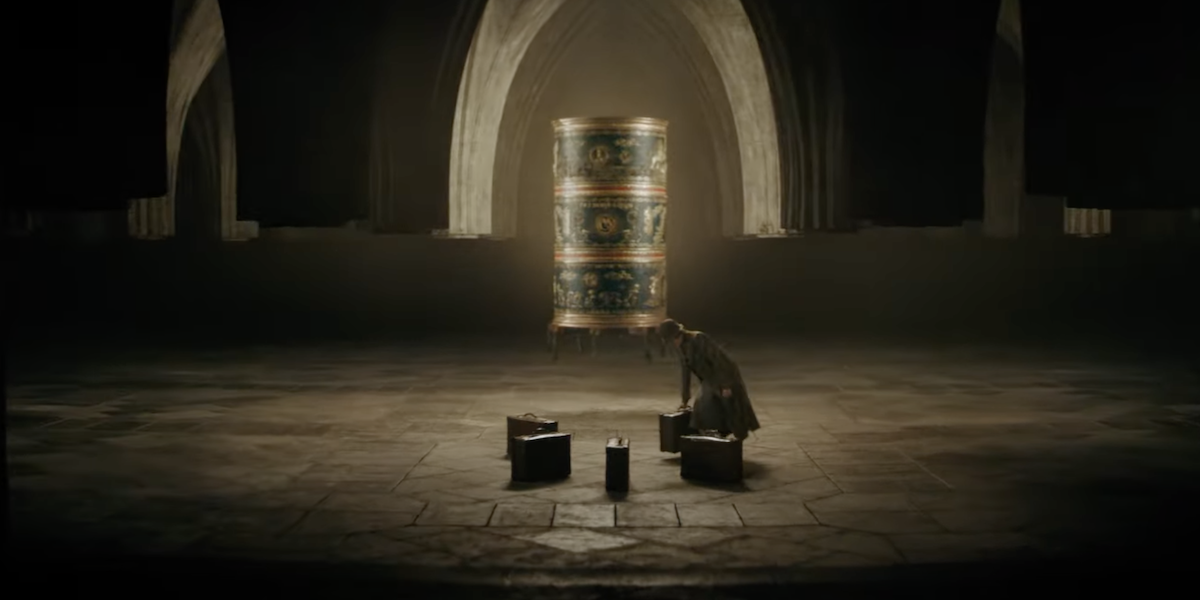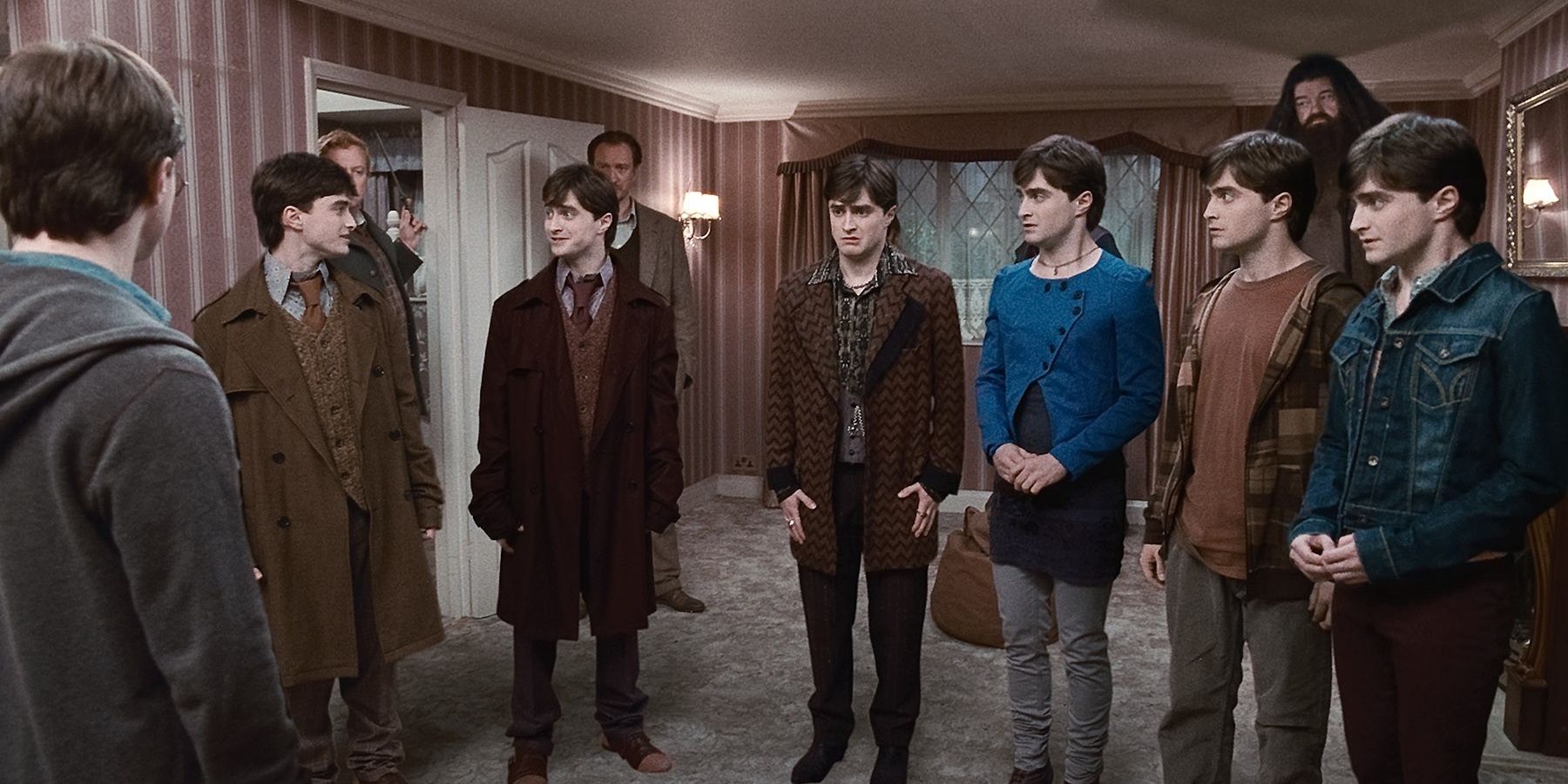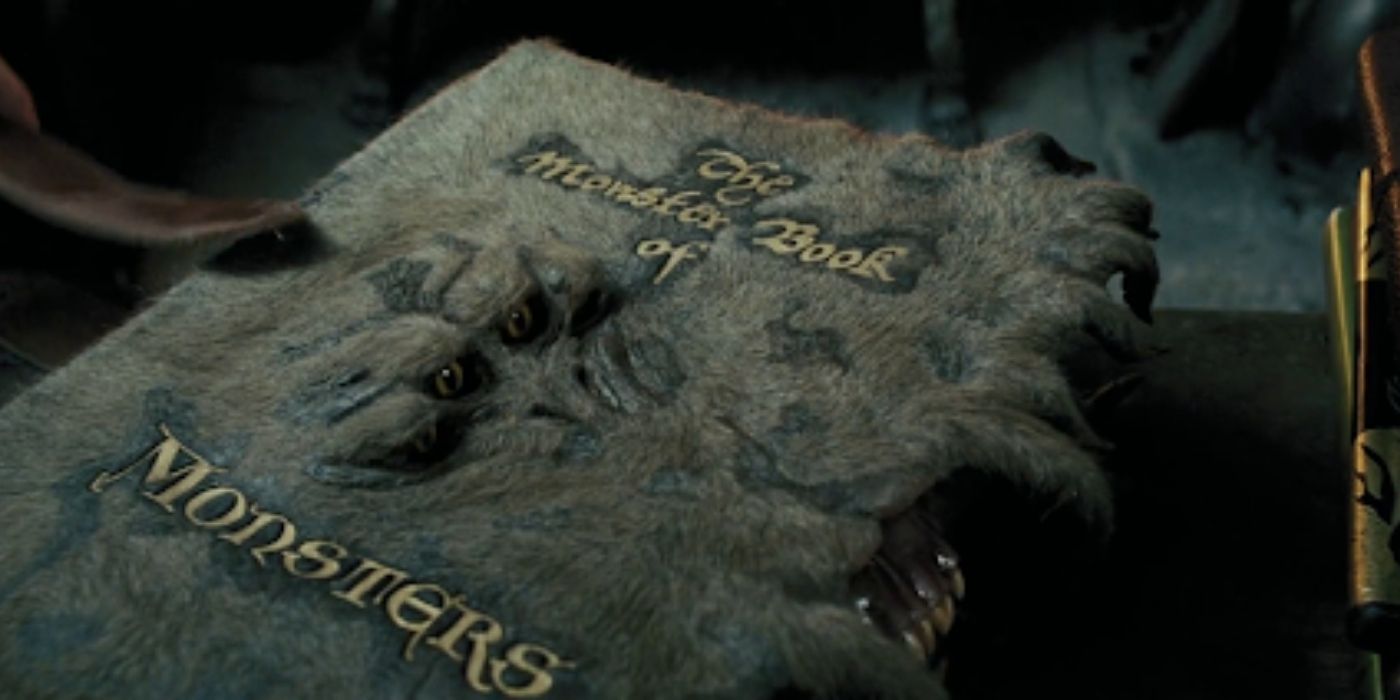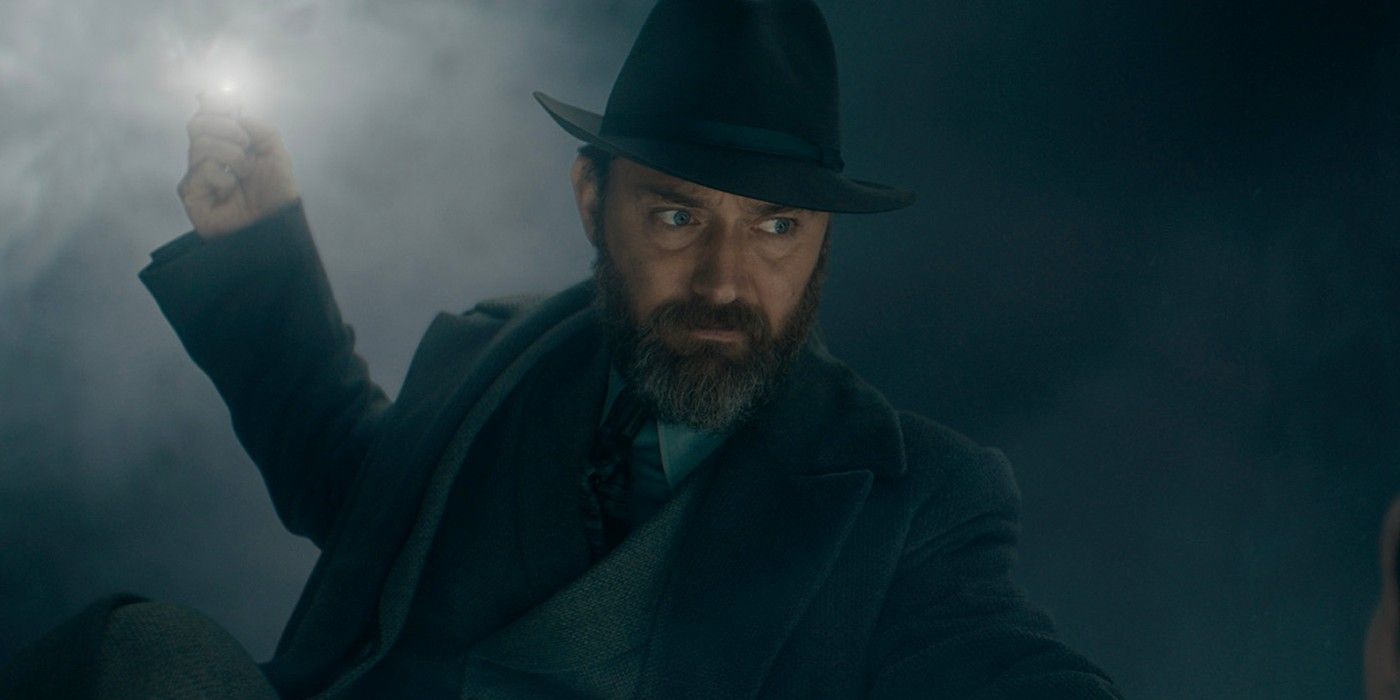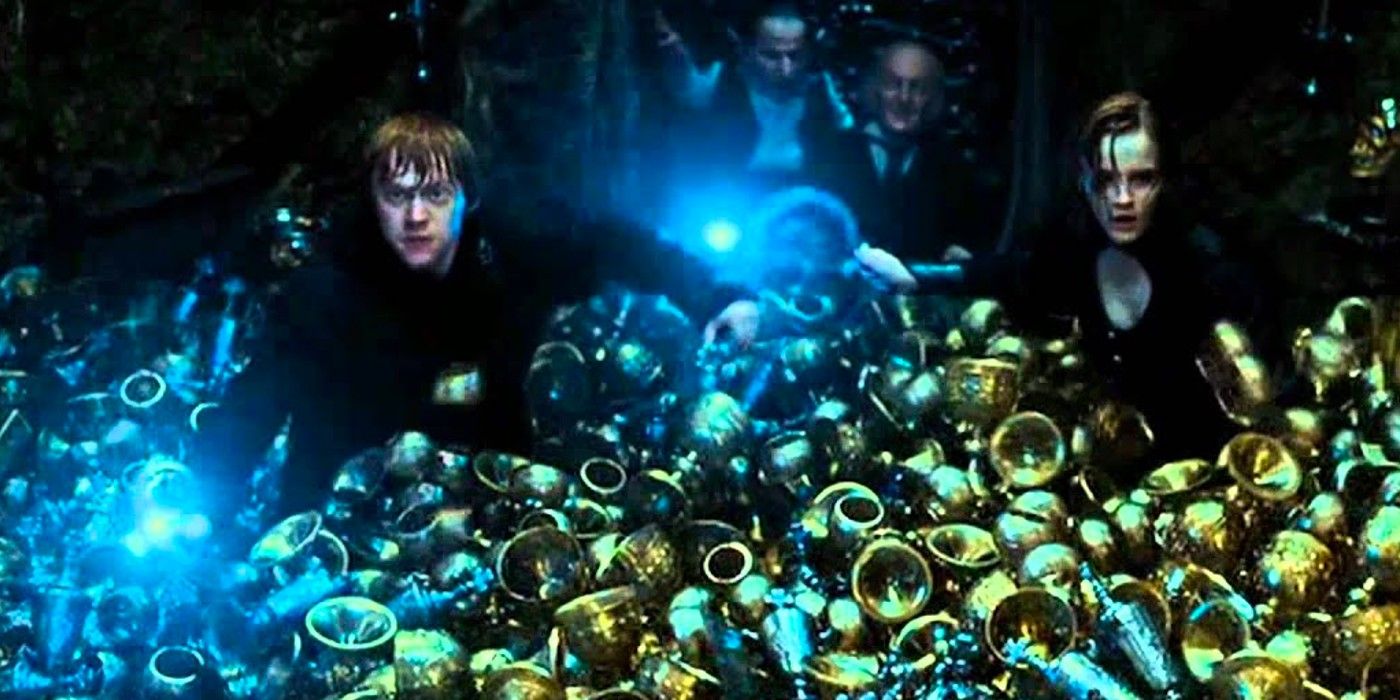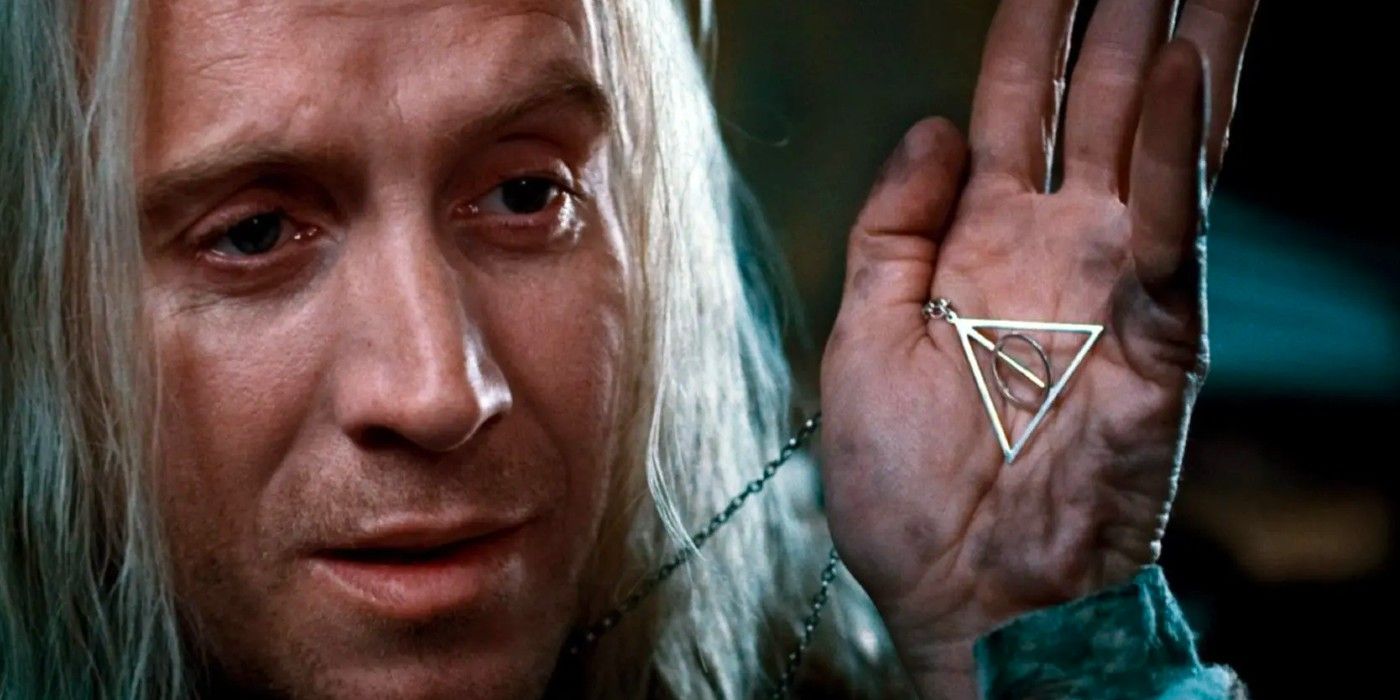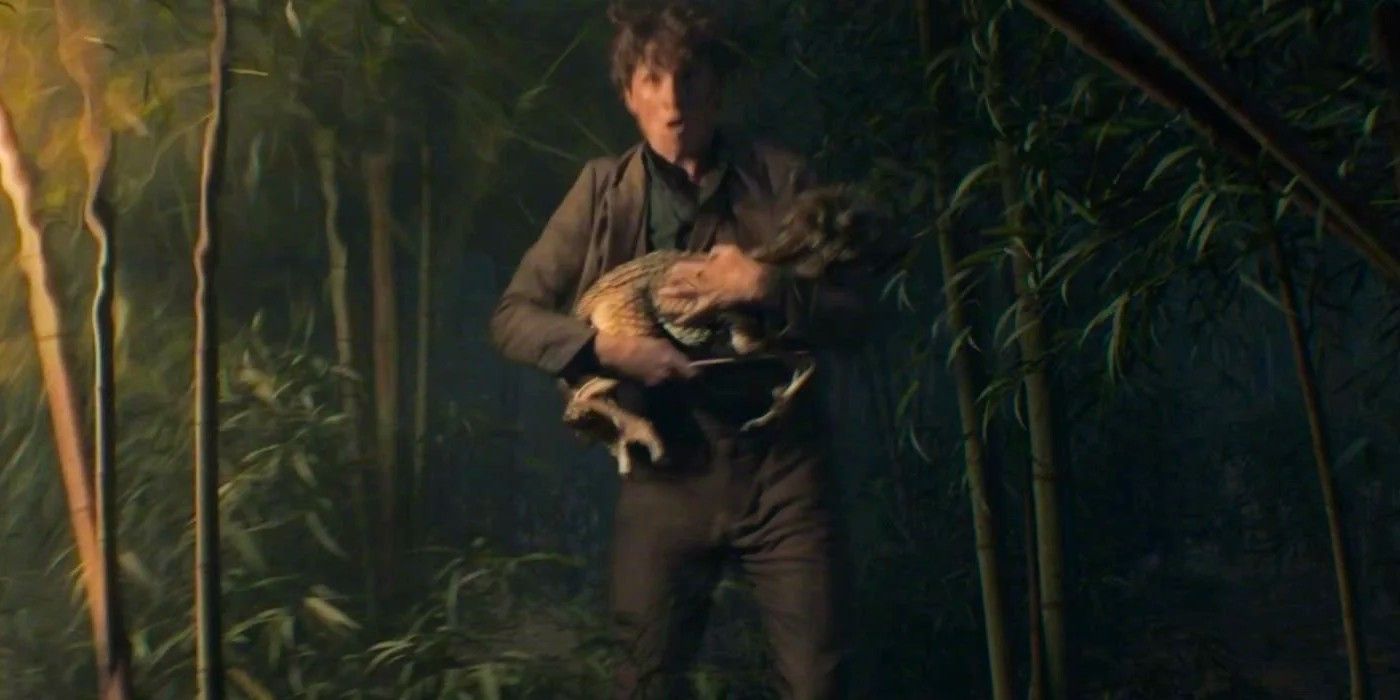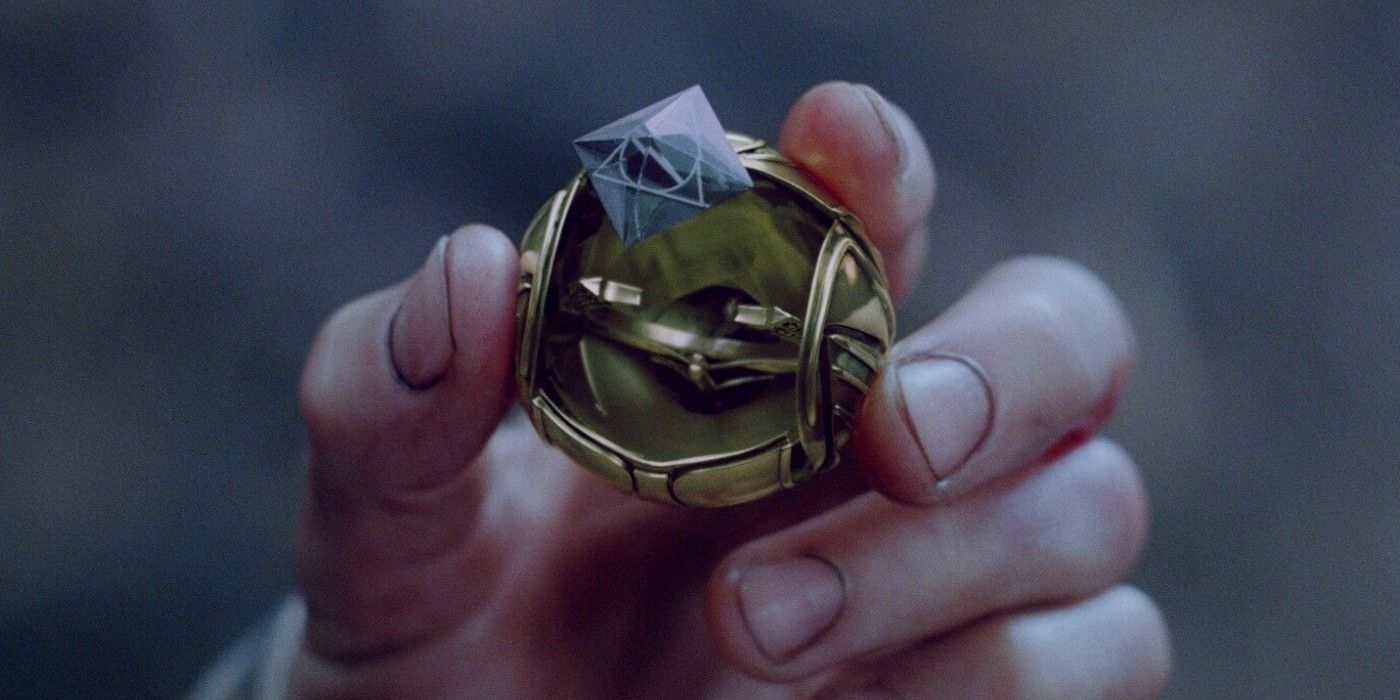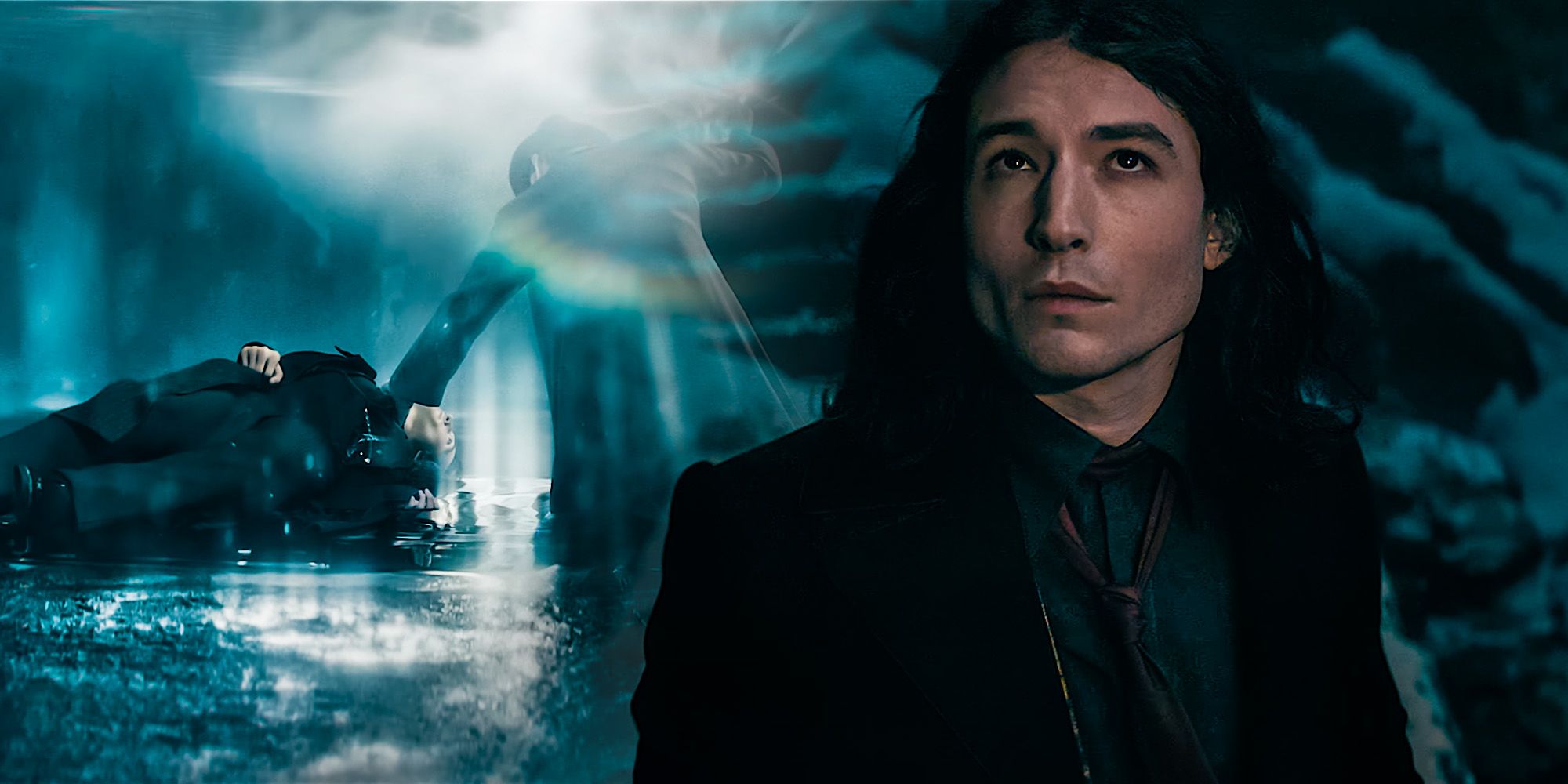Warning: This piece contains spoilers for Fantastic Beasts: The Secrets of Dumbledore.
When third Harry Potter spin-off Fantastic Beasts: The Secrets of Dumbledore finally released, it promised an expansion of JK Rowlings' Wizarding World packed full of Easter eggs and references. The 1930s setting may make cameos by Harry Potter's golden trio impossible, but its immediately obvious that the portrait of Dumbledore and Grindelwald's romance and explosive rift knows precisely what world it belongs to. And despite Fantastic Beasts 3's fixed reviews, it's absolutely an improvement on The Crimes of Grindelwald.
Whether the Secrets of Dumbledore will be enough to "save" the Fantastic Beasts movie series remains to be seen, but the sequel's biggest disappointment is that it sets up a better movie that would finally see the legendary duel between Dumbledore and Mads Mikkelsen's Gellert Grindelwald. Should Fantastic Beasts 3's box office convince the newly-merged Warner Bros Discovery, that future could be realized. Then again, the studio may see a better future for the Wizarding World in reinvention and a different story: a Marauders series, perhaps? Or even an Order Of The Phoenix series?
Despite the close relationship between Harry Potter and the Fantastic Beasts movies, Secrets of Dumbledore's Easter eggs are fairly muted, almost as if Warner Bros is keen to underline this as an original story. Inevitably, because of the prominence of Jude Law's Albus Dumbledore in the story, that agenda is a little redundant, but there's something to be said for the restraint shown in Fantastic Beasts 3 and the attempt to once more justify its place under that banner and not just as a wider Wizarding World movie. But there are still lots of interesting references, call-backs, and in-jokes, all the same. Here's every Harry Potter and Wizarding World Easter egg in Fantastic Beasts: The Secrets of Dumbledore.
"What Is Right And What Is Easy" Calls Back To The Goblet Of Fire
Fantastic Beasts 3's political plot is based on the importance of Gellert Grindelwald being elected the Supreme Mugwump as Head of the International Confederation of Wizards. In order to stop that happening, Dumbledore initially approaches outgoing leader Anton Vogel and tells him through Newt to do "what is right, not what is easy". This calls back directly to Dumbledore's speech to Harry in The Goblet of Fire after Cedric Diggory's death: "Dark and difficult times lie ahead. Soon, we must all face the choice between what is right and what is easy."
Where Harry Potter's Theme Music Plays In Fantastic Beasts 3
While Fantastic Beasts: The Secrets of Dumbledore doesn't open with the Harry Potter theme music over the Wizarding World title page, as soon as Newt and his fellow characters return to Hogwarts, John Williams' "Hedwig's Theme" plays symbolically.
Dumbledore's Magic Watch Appears For The First Time
While the Harry Potter movies opted to leave out Albus Dumbledore's magical pocket watch, despite its appearance in 2 of JK Rowlings' original books, it appears in Fantastic Beasts 3. In The Secrets of Dumbledore, Jude Law's Hogwarts teacher uses it to find Credence's location, having used it first in the Harry Potter books to work out that Hagrid was running late in delivering the infant Harry Potter to 4 Privet Drive in 1981.
Minerva McGonagall's Fantastic Beasts Cameo
Because of where Fantastic Beasts 3 fits into the Harry Potter timeline, it doesn't have a lot of Potter character appearances, but Fiona Glascott's Minerva McGonagall appears again, after her debut in Crimes Of Grindelwald. This is despite the fact that Secrets of Dumbledore is set several years before McGonagall was born in Wizarding World canon in 1935
Aberforth Dumbledore's Magic Mirror Foreshadowing
The reveal that Credence Barebone is actually Aberforth Dumbledore's son in Secrets of Dumbledore doesn't entirely work with the Crimes of Grindelwald's twist, but it is a more satisfying end to his story. Their relationship is revealed throughout the movie with an unprecedented link that sees them communicating between enchanted mirrors, writing messages on the frosted glass. While it's a slightly different variation on the theme, it foreshadows Aberforth being Harry Potter's secret guardian angel through Dumbledore's enchanted hand mirror in the mainline movies. All-in-all, it's a good way to make Credence's Dumbledore twist feel more part of the world.
The Origin Of Dumbledore's Office Password?
Despite the fact that Dumbledore and Jacob clearly don't have enough of a good relationship for the former to attend the latter's wedding (for some unclear reason), there's a hint that the muggle meant more to the future Hogwarts headmaster than it may seem. In The Secrets of Dumbledore, Jacob is tricked by a group of Slytherin students into eating some Cockroach Clusters as Albus reveals to his horror. Fast forward 50 or so years into Harry Potter's future and Dumbledore used "Cockroach Clusters" as one of the passwords to his office in Hogwarts. Perhaps as a tribute?
Harry Potter's Room Of Requirement In Hogwarts
Logically, Dumbledore could have used the Room of Requirement to magically create the fake enchanted suitcases his group of heroes each takes to Bhutan, but logic isn't always Fantastic Beasts' strongest suit. Either way, Hogwarts' infamous "Come and Go" room plays a key role in the plot against Grindelwald as it houses a giant bell portkey that takes Newt and the gang to the showdown with Grindelwald.
A Battle Of The Seven Potters Call-Back
In the climactic sequence set in Bhutan during Fantastic Beasts 3's ending, Dumbledore's plan involves Newt's assistant Bunty getting 4 identical duplicates of his travelling case, in order to hide the Qilin. It's a ruse all Harry Potter fans are familiar with thanks to the Battle of the Seven Potters from the opening of The Deathly Hallows. In that sequence, the Order of the Phoenix attempt to confound Voldemort by presenting him with 7 identical Harrys to mask the real one.
The Monster Books Of Monsters Returns
During Fantastic Beasts 3's finale in Bhutan, when Grindelwald's followers open the fake suitcases, their bewitchments are revealed. One of the cases seems to hold only books until the truth is revealed and each tome turns out to be a Monster Book of Monsters, setting off a mass attack on the wizarding villains. The monster book first appeared in Harry Potter and the Prisoner of Azkaban, when Hagrid introduces it to his Care of Magical Creatures reading list.
Dumbledore's Deluminator Returns (With A Twist)
Albus Dumbledore's Deluminator ended up playing a significant role in The Deathly Hallows when it allowed Rupert Grint's Ron Weasley to reconnect with Harry and Hermione on their Hallows quest. Previous to that, it had been shown to perform its mostly expected magical powers of lighting and extinguishing lights. And now, Fantastic Beasts 3 reveals a new power for the returning Deluminator, as Dumbledore seems to use it to teleport himself and Credence to the Wizarding World's version of the Upside Down.
Deathly Hallows' Most Annoying Magic Spell Returns - The Doubling Charm
Jacob Kowalski is put in charge of one of Bunty's enchanted suitcases and when Grindelwald's henchmen open it, it is revealed to contain only pastries. But then touching Jacob's buns make them multiply in great numbers, mimicking the same enchantment placed on Helga Hufflepuff's cup in Bellatrix Lestrange's vault in Gringotts.
The Sign Of The Deathly Hallows
Strangely, Harry Potter fans took to the sign of the Deathly Hallows in a way that removed it from its loaded meaning in Wizarding World lore, choosing it as a frequently used symbol of fandom, rather than the in-universe analog of a Swastika. In Fantastic Beasts 3, the symbol is glimpsed briefly above a door in Grindelwald's castle headquarters. In a new development, Grindelwald also introduces his own symbol, incorporating elements of the Deathly Hallows alongside his initials to make a sort of political logo.
The Hint To Aberforth Dumbledore's "Goat Business"
Aberforth Dumbledore's "strange fondness" for goats is one of Harry Potter's weirdest jokes, and something that was seemingly included as a mischievous joke rather than something as sinister as has been implied. JK Rowling revealed the "inappropriate charms" he cast on a goat were to keep its "horns curly and clean" to cover that side of things (whether it makes sense or not). In one moment in Fantastic Beasts: The Secrets of Dumbledore, Aberforth shares a tender moment with the Qilin in his Hogsmeade pub, perhaps as a nod to his "fondness" for four-legged creatures.
The Origin Of Harry Potter's Golden Snitch?
After Quidditch was dropped from the Harry Potter movies, it briefly reappears in Fantastic Beasts 3 as the first Hogwarts sequence opens with two Seekers chasing a Golden Snitch above the school's towers. Later, one of the enchanted suitcases in the Bhutan sequence contains a set of Quidditch balls, with the Bludger wreaking havoc. During the sequence, Dumbledore retrieves the Snitch and puts it in his pocket: could this be the same Snitch that would later become so important in the Harry Potter movies? After all, Dumbledore was a sentimentalist and he could have chosen to use the same Snitch in Harry's first Quidditch game as was used to help take down Grindelwald.
"Always"
Given his redemption arc, Fantastic Beasts 3 clearly tries to turn Ezra Miller's Credence Barebone into a new version of Snape, adding tragedy and trauma to his backstory. As a final nod to that transformation, when Credence reveals he is dying to Aberforth, he asks his father whether he thought of him. The answer Aberforth gives is a simple "Always" in an obvious call-back to Snape's tribute to Lily Potter that has become an enduring symbol of Wizarding World fandom since.

